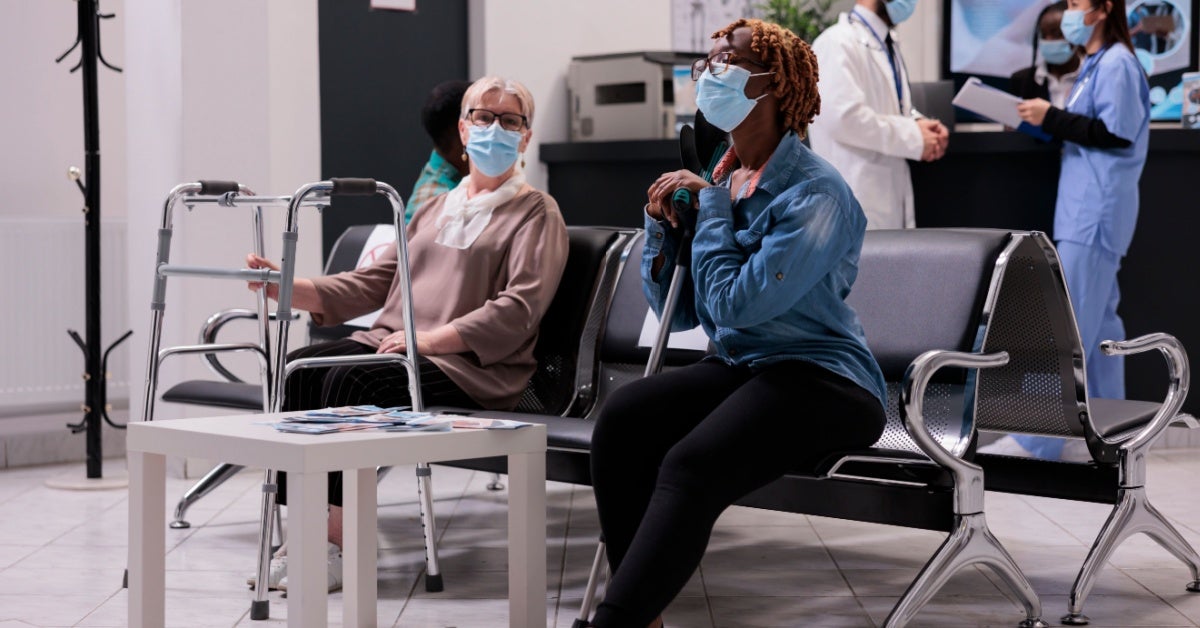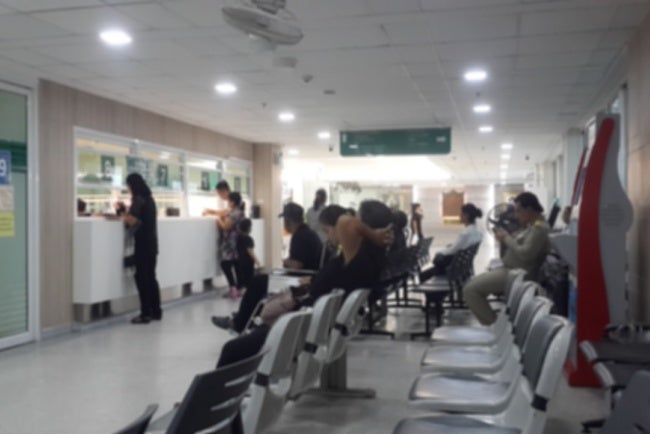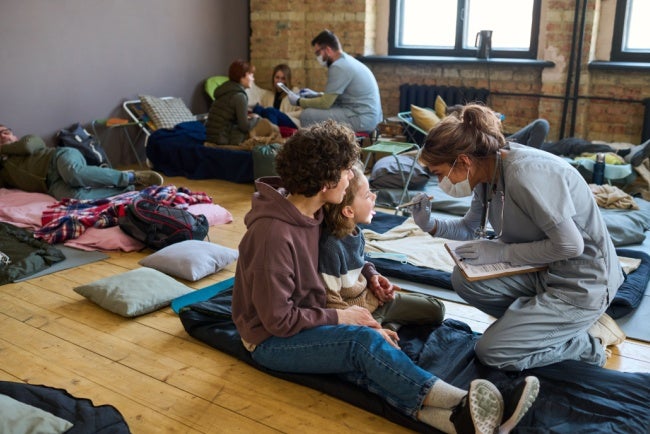Identifying Vulnerable Populations in Healthcare and How Nurses Can Make an Impact

In the vast healthcare landscape, certain populations, commonly called vulnerable populations, face unique challenges that predispose them to health disparities. These vulnerable populations, characterized by factors such as socioeconomic status, race, gender or health conditions, require specialized attention to bridge the gap in healthcare outcomes.
In this blog, we will delve into the intricacies of identifying vulnerable populations in healthcare, explore their specific health disparities and discuss how nurses can play a pivotal role in making a positive impact.
What are Vulnerable Populations in Healthcare?
Specialized or vulnerable populations in healthcare encompass groups of individuals who, under specific characteristics, circumstances or conditions, face an elevated risk of encountering disparities in access to and the quality of healthcare services.
These groups extend beyond traditional categories and may involve patients who belong to racial or ethnic minorities, children, the elderly, those facing socioeconomic disadvantages, individuals with inadequate insurance coverage or those managing specific medical conditions.
Determinants of Health Disparities
Vulnerable populations in healthcare exist due to a complex interplay of social, economic, cultural and systemic factors. Disparities may arise from inadequate access to education, healthcare infrastructure, economic opportunities and discriminatory practices.
Addressing the needs of these populations is essential for achieving healthcare equity and ensuring that all individuals have the chance to attain their highest level of health. Efforts to understand and eliminate these disparities involve targeted interventions, policy changes and a commitment to fostering inclusivity within the healthcare system.
Guiding Vulnerable and Underserved Communities in Healthcare
Healthcare professionals, particularly nurses, play a crucial role in aiding vulnerable and underserved communities, also known as special populations in healthcare. Their expertise in understanding the various factors impacting their patients' health enables them to create personalized solutions for individuals and communities. Nurses actively collaborate with diverse teams and partners to implement these solutions effectively.
By recognizing and addressing the distinct challenges these special populations face, nurses can refine their approaches for more impactful and compassionate care. Nurses must initially comprehend the nuances of each population to prepare focused strategies that address the unique health disparities encountered by underserved populations in healthcare, ensuring the fulfillment of their specific needs.
Ill or Disabled Populations
Individuals with chronic illnesses or disabilities often face increased demand for healthcare services. Roughly 133 million Americans (nearly half of the population) are currently contending with at least one chronic illness, such as hypertension, heart disease or arthritis. This statistic has surged by 15 million in the past decade alone, and projections anticipate a further increase to 170 million by 2030.
Additionally, the U.S. Census Bureau data reveals that approximately 42.5 million Americans, constituting 13% of the civilian noninstitutionalized population, have disabilities. This category encompasses individuals facing hearing, vision, cognitive, mobility, self-care or independent living challenges.
Health Disparities for Ill and Disabled Populations
Individuals with illnesses and disabilities confront a myriad of health disparities stemming from both structural and social determinants. They grapple with ableism, stigma and discrimination, impacting their physical and mental well-being. According to the WHO, legal frameworks may compound these challenges, denying them decision-making autonomy and subjecting them to practices such as forced sterilization and institutionalization.
Social, educational and employment exclusion, and poverty and subpar living conditions heighten the health risks for these populations. Which is further exacerbated by gaps in formal support mechanisms, necessitating heavy reliance on family assistance.
Persons with disabilities often contend with elevated risk factors for non-communicable diseases due to exclusion from public health interventions. The health system itself poses formidable barriers, marked by insufficient knowledge, negative attitudes, discriminatory practices, inaccessible facilities and a dearth of data on disability, collectively contributing to pervasive health inequities.
Strategies to Help Serve Ill and Disabled Populations
General healthcare strategies involve promoting accessibility, incorporating technology for remote care and advocating for inclusive policies. Nurses can play a crucial role by providing personalized care plans, fostering self-management skills and advocating for patient needs within the healthcare system.
Women
Women constitute a vulnerable population in healthcare, facing distinct challenges that influence their health outcomes. Among the 11 nations under The Commonwealth Fund’s healthcare study, women in the United States express the least positive experiences. They bear the highest burden of chronic illnesses, exhibit the highest rates of forgoing necessary healthcare due to financial constraints, face challenges in affording their medical care and express the lowest satisfaction levels with the care they receive.
Recognizing and addressing these challenges is pivotal to ensuring the health and well-being of women in healthcare and promoting inclusivity within the broader healthcare system.
Health Disparities for Women’s Healthcare
Women can encounter gender-specific health disparities, including higher rates of certain conditions such as autoimmune diseases, mental health issues such as depression, anxiety and eating disorders, and reproductive health concerns.
Furthermore, women may experience inequities in access to healthcare services, influenced by factors like socioeconomic status, race and geographical location. In the United States, for instance, data shows that women of color face additional barriers to quality healthcare, resulting in disparities in maternal mortality rates and other health outcomes.
Stereotypes about gender influence the treatment of illnesses, as evidenced by studies indicating that doctors often perceive men with chronic pain as "brave" while labeling women as "emotional." Workplace discrimination against health workers, particularly older female doctors, persists in forms of harassment, discrimination and salary inequity.
This bias extends to medical research, historically favoring male participants and neglecting the biological differences between sexes. Consequently, this lack of inclusivity impedes a comprehensive understanding of the health of female and intersex individuals, contributing to persistent gender bias in healthcare.
Strategies to Help Serve Women
General strategies include promoting women's health education, ensuring reproductive rights and reducing gender-based disparities. Nurses can contribute by offering comprehensive women's health services, advocating for preventive care and providing emotional support during critical life stages.
Military Veterans
Military veterans (comprising a diverse demographic) experience unique health challenges and are therefore considered an example of a vulnerable population in healthcare. More than 18 million living veterans are in the United States, representing approximately 6% of the country's adult population. The demand for healthcare services for veterans is influenced by factors such as wartime injuries, mental health issues and aging veteran populations.
Health Disparities for Veterans
Disparities for veterans may include higher rates of mental health conditions like PTSD, traumatic brain injuries and challenges in accessing specialized care. A recent study conducted a comprehensive analysis of health disparities among U.S. military veterans, revealing consistently higher self-reported rates of various morbidities, excluding mental health issues and heart disease. The study underscored the pervasive nature of these disparities, painting a concerning picture of the overall health of the average U.S. veteran.
Strategies to Help Serve Veterans
General strategies involve creating veteran-specific healthcare programs, addressing mental health stigma and improving veteran transition services. Nurses can contribute by specializing in veteran care, understanding military culture and advocating for veteran-specific healthcare policies.
Ethnic Minorities
In the United States, ethnic minorities encompass individuals who belong to racial or ethnic groups numerically smaller than the majority population. These groups may include, but are not limited to, Black or African American, Hispanic or Latino, Asian American, Native American and other non-White communities.
Ethnic minorities often face unique challenges in healthcare, rendering them a vulnerable population. Factors such as socioeconomic disparities, limited access to quality healthcare, language barriers and cultural differences contribute to health inequities within these communities.
Health Disparities for Ethnic Minorities
Data from the Centers for Disease Control and Prevention (CDC) indicate that racial and ethnic minority populations across the United States face elevated rates of illness and mortality in various health conditions, such as diabetes, hypertension, obesity, asthma and heart disease.
In addition, ethnic minorities often experience disparities in healthcare access. For instance, 25.3 million Americans of all ages did not have health insurance in the first three months of 2023. To put things into perspective, 1 in 4 Hispanic adults ages 18–64 (25.0%) lacked health insurance, a greater percentage than Black, non-Hispanic adults (10.1%), White, non-Hispanic adults (6.9%) and Asian, non-Hispanic adults (2.7%).
Strategies to Help Serve Ethnic Minorities
General strategies to address health inequity for ethnic minorities include culturally competent care, community outreach and addressing social determinants of health. Nurses can contribute by fostering cultural competence, advocating for diversity in healthcare leadership and participating in community health initiatives.
Low-Income or Homeless Populations
The low-income or homeless population in the United States comprises individuals and families facing significant economic hardships, often lacking stable housing and financial resources. According to the Census Bureau, approximately 38 million Americans (11.6% of the total population) lived at or below the poverty level in 2021. In addition, more than 580,466 Americans were homeless in the same year.
According to the Institute for Health Policy and Leadership, homelessness is associated with poor health outcomes.
Health Disparities for Low-income and Homeless Populations
Economic instability and homelessness are intricately linked to increased health risks, including higher rates of chronic illnesses, mental health issues and substance abuse. Limited access to preventive care, ongoing medical treatment and consistent healthcare services further exacerbate their health disparities.
Moreover, factors such as food insecurity, exposure to harsh living conditions and the lack of a stable support system contribute to the vulnerability of this population. Homeless individuals often encounter barriers to healthcare access, including difficulty navigating healthcare systems, stigma and discrimination.
Strategies to Help Serve Low-income and Homeless Populations
Addressing the healthcare needs of the low-income or homeless population requires a comprehensive approach that goes beyond medical care, addressing the social determinants of health to uplift the well-being of this vulnerable community.
General strategies include outreach programs, community clinics and addressing social determinants of health. Nurses can contribute by participating in mobile healthcare services, collaborating with community organizations and advocating for policies that address homelessness.
Rural Geographical Communities
The rural geographical population in the United States includes individuals and communities residing in less densely populated areas, often characterized by limited access to healthcare resources and services. Covering about 97% of the United States' land area, rural areas, commonly known as rural America, are home to approximately 60 million people, constituting one in five residents (17.9% of the total population).
Health Disparities for Rural Geographical Communities
Considered a vulnerable population in healthcare, rural residents face unique challenges stemming from geographic isolation, reduced availability of medical facilities and a shortage of healthcare professionals.
Studies indicate that 58% of Americans live less than 5 miles away from their nearest hospital, while 24% are situated between 5 and 10 miles away and 18% live more than 10 miles away. The greater distances to healthcare facilities can result in delayed or insufficient medical care, particularly for emergency services.
Additionally, limited economic opportunities and resources in rural areas contribute to higher rates of poverty and disparities in health outcomes. Access to preventive care, specialty services and health education may be constrained, impacting the overall health and well-being of the rural population.
Strategies to Help Serve Rural Communities
Addressing the healthcare needs of those living in rural areas necessitates targeted strategies that account for the unique challenges posed by geographic isolation and resource limitations, aiming to ensure equitable access to quality healthcare services for all.
General strategies include telehealth services, mobile clinics and addressing healthcare workforce distribution. Nurses can contribute by participating in rural health initiatives, providing telehealth services and advocating for policies that address healthcare disparities in rural areas.
LGBTQ+ Population
The LGBTQ+ population in the United States, encompassing individuals identifying as lesbian, gay, bisexual, transgender, queer or other diverse sexual orientations and gender identities, is recognized as a vulnerable population in healthcare. In 2022, the percentage of U.S. adults who self-identify as LGBTQ+ increased to 7.1% (double the percentage from 2012).
Health Disparities of the LGBTQ+ Population
The LGBTQ+ population may face disparities in healthcare due to discrimination, stigma and lack of understanding. According to recent studies, LGBTQ+ individuals face an elevated risk for a range of health challenges compared to the general population. These risks encompass substance use, sexually transmitted infections (STIs), cancers, cardiovascular diseases, obesity, as well as increased vulnerability to bullying, isolation, rejection, anxiety, depression and suicidal tendencies.
Discrimination, stigma and societal biases contribute to barriers to accessing healthcare services and can adversely affect their overall well-being. Moreover, the lack of inclusive practices and cultural competency in healthcare settings can impede effective communication and understanding between healthcare providers and LGBTQ+ individuals.
Strategies to Help Serve the LGBTQ+ Population
Recognizing and addressing the specific healthcare needs of the LGBTQ+ population is essential to fostering a more inclusive and equitable healthcare system. General strategies include LGBTQ+ inclusive policies, cultural competency training and community outreach. Nurses can contribute by promoting inclusive healthcare environments, educating colleagues on LGBTQ+ health needs and advocating for LGBTQ+ healthcare rights.
Minors and the Elderly
Both minors and elderly populations in the United States are recognized as examples of vulnerable populations in healthcare, each facing unique challenges. Currently, there are 73,106,000 people aged 18 and under (22.1% of the total population) and 55,892,014 people aged 65 and over (16.8% of the total population) in the United States. Both age groups require specialized attention and tailored healthcare solutions to address their distinct needs.
Health Disparities for Minors and Elderly Populations
Minors, due to their age and dependency, may encounter barriers in effectively communicating their healthcare needs. According to the Centers for Disease Control and Prevention (CDC), children’s limited ability to follow directions or make decisions can expose them to danger. Physiologically, children's bodies absorb poisons faster than adults' due to quicker energy expenditure, thinner skin and faster breathing rates.
Communication challenges and a less developed immune system further contribute to their vulnerability, especially during emergencies when they may be separated from caregivers or have special healthcare needs. They are often reliant on caregivers, and issues such as child abuse, neglect or inadequate access to healthcare can pose significant threats to their well-being.
Conversely, the elderly face distinct health disparities stemming from the natural aging process and associated factors. With advancing age, older individuals may encounter challenges in mobility, cognition and the onset of chronic conditions. According to the CDC, older adults are particularly vulnerable to various health issues, including dementia and chronic diseases.
Social isolation, financial constraints and limited access to healthcare resources further compound their health disparities. The aging population often grapples with the need for specialized healthcare to address their unique medical conditions, making it imperative to implement tailored strategies that consider their specific needs and ensure comprehensive and compassionate care.
Strategies to Help Serve Minors and the Elderly
Recognizing vulnerable populations in healthcare is paramount for developing comprehensive and compassionate healthcare strategies that ensure the well-being of minors and elderly individuals in the United States.
General strategies include age-appropriate healthcare services, preventive care and caregiver support. Nurses can contribute by specializing in pediatric or geriatric care, promoting healthy aging practices and advocating for age-appropriate healthcare policies.
Transform Healthcare and Champion Equity with Cleveland State University's Online MSN
Tackling health disparities in vulnerable populations is a collective mission for the healthcare community, and nurses, as frontline providers, play a pivotal role in making a substantial impact. By advancing your education, you can amplify your impact and help shape a more equitable healthcare system.
Cleveland State University’s Online Master of Science in Nursing (MSN) programs offer flexible pathways designed to fit your goals:
- The MSN - Clinical Nurse Leader program: develop leadership skills to improve patient outcomes and drive innovation across the care continuum
- The MSN - Forensic Nursing program: combine nursing expertise with forensic science to advocate for justice and support recovery in a compassionate, evidence-based way
- The MSN - Nursing Education program: prepare to educate and mentor future nurses, influencing the next generation through effective teaching and leadership
- The MSN - Family Nurse Practitioner program: gain advanced practice skills to deliver comprehensive primary care for patients of all ages
- The MSN - Psychiatric Mental Health Nurse Practitioner program: specialize in mental health care, providing critical support in community agencies, group practices and diverse clinical settings
Ready to transform healthcare and champion equity? Explore Cleveland State University’s online MSN programs today.






